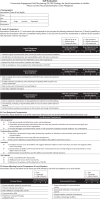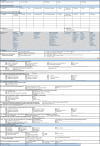Incorporating Praxis into Community Engagement-Self Monitoring: A Case Study on Applied Social Innovation in Rural Philippines
- PMID: 40438480
- PMCID: PMC12106106
- DOI: 10.47895/amp.vi0.9847
Incorporating Praxis into Community Engagement-Self Monitoring: A Case Study on Applied Social Innovation in Rural Philippines
Abstract
Background: Social Innovation in Health Initiative Philippines introduced the community engagement self-monitoring strategy in two community-managed social innovations in 2021. Phase 1 demonstrated the strategy's viability by identifying community "local monitors," selecting indicators, monitoring, and conducting feedback sessions. In 2022, a second phase was implemented to improve the process by integrating capacity-building activities and praxis sessions, and gathering insights on the strategy's sustainability.
Objective: In this paper, we sought to describe the stages of the CE-SM strategy applied within a Philippine local health system in geographically isolated and disadvantaged contexts. Specifically, we: 1) Identified the key competencies of the local CE-SM monitors; 2) facilitated capacity building to strengthen their skills and abilities; 3) explored sustainability mechanisms; and 4) identified integration points of the CE-SM in strengthening local health systems.
Methods: Two communities in a rural municipality implementing a social innovation called the "Seal of Health Governance'' were chosen for the expanded community engagement self-monitoring (CE-SM) pilot. Profiling of local monitors and self-assessment of competencies were facilitated. Capacity-building activities were conducted for community engagement, data processing, and data analysis, complemented by praxis sessions guided by people-centered principles.
Results: Local monitors from both communities showed determination in performing their responsibilities but differed in their levels of participation. Their appreciation of their role increased as it broadened from merely collecting data to understanding and using it to advocate for their community's needs. The minimum resources for communities to implement the strategy include financial mechanisms to ensure the availability of resources. Local monitors have improved their ability to analyze their communities' realities, particularly regarding health leadership and governance.
Conclusions: Community engagement self-monitoring is a feasible and sustainable strategy for monitoring and evaluating health interventions if adequate support is provided and complemented by capacity-building and praxis sessions. It promotes listening to the community and empowering them to participate in decision-making, which are vital in fostering ownership and sustainability of social innovations in health.
Keywords: community engagement; community-grounded tool; people-centered development; praxis; self-monitoring; social innovation.
© The Author(s) 2025.
Conflict of interest statement
All authors declared no conflicts of interest.
Figures






References
-
- Tiangco PMP, Mier-Alpano JD, Cruz JRB, Alacapa J, Escauso J, Amazigo U, et al. . Community engagement self-monitoring (CESM) strategy for social innovations in health: pilot implementation in the Philippines. BMJ Innov. 2023. Jan;9(3):185-91. doi: 10.1136/bmjinnov-2022-001049. - DOI
-
- Amazigo UV, Obono M, Dadzie KY, Remme J, Jiya J, Ndyomugyenyi R, et al. . Monitoring community-directed treatment programmes for sustainability: lessons from the African Programme for Onchocerciasis Control (APOC). Ann Trop Med Parasitol. 2002. Mar;96 Suppl 1: 75-92. doi: 10.1179/000349802125000664. PMID: 12081253. - DOI - PubMed
-
- Peterson CB, Talmage CA, Knopf RC. Chapter 1: Weaving reflection, action, and knowledge creation: lived experience as a catalyst into the cycle of praxis for community development. Cheltenham, UK: Edward Elgar Publishing; 2020. pp. 12-22.
-
- Steger MB, Battersby P, Siracusa JM. People-centered development. SAGE Publications Ltd; 2014. pp.902-910.
LinkOut - more resources
Full Text Sources
